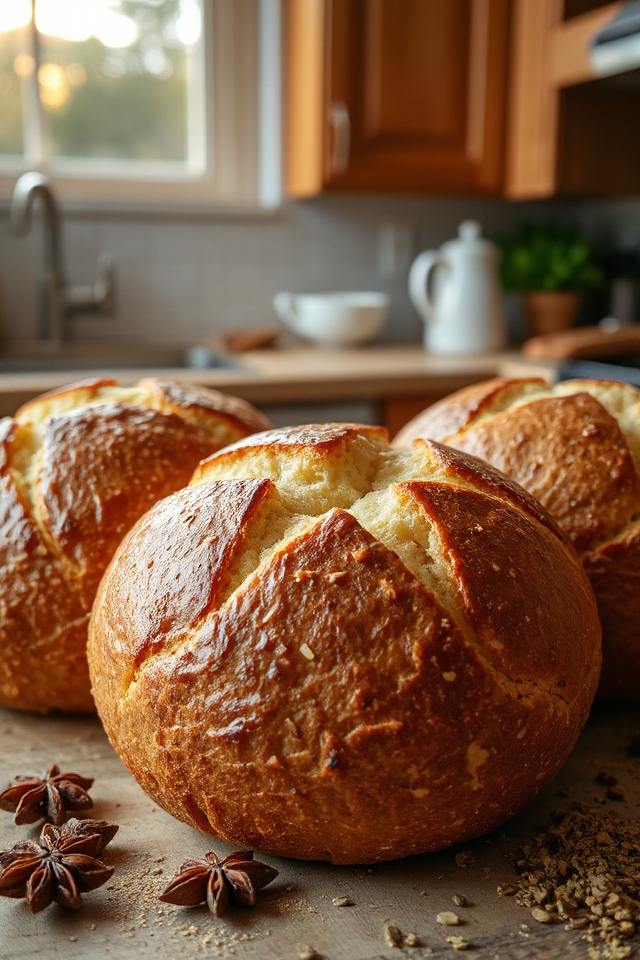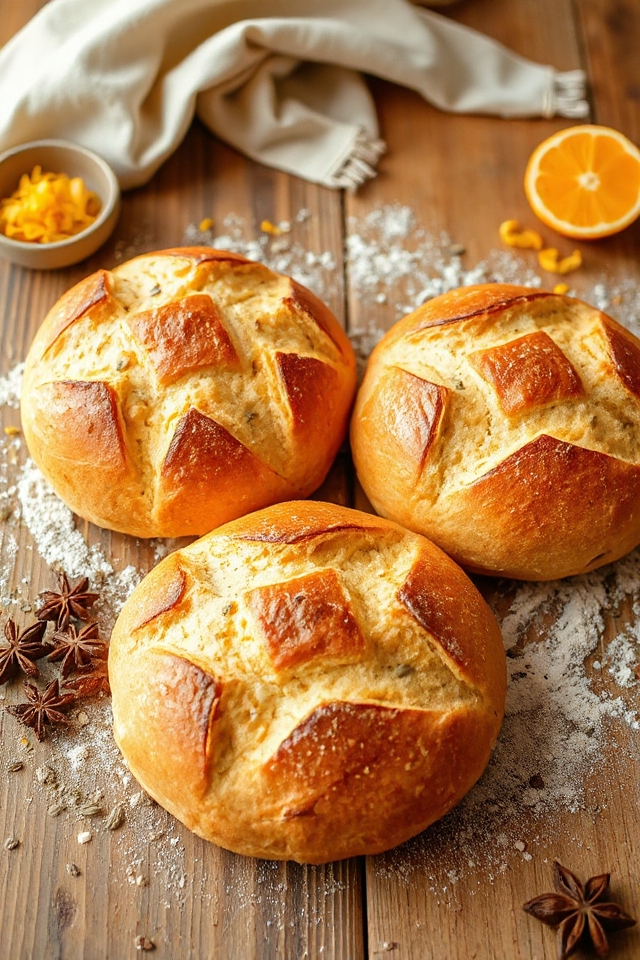Why You’ll Love This Swedish Rye Bread Recipe
Have you ever tasted bread that warms your soul? That’s exactly what you’ll experience with this Swedish rye bread recipe.
The rich, earthy flavors blend harmoniously, creating a comforting aroma that fills your kitchen. I love how this bread is perfect for any occasion—whether it’s a cozy dinner or a festive gathering.
Its slightly sweet undertones and unique spices make it truly special. Plus, the texture is delightful, with a crust that’s just the right amount of crunchy.
Trust me, once you try it, you’ll find it hard to resist coming back for another slice!
Ingredients of Swedish Rye Bread
When it comes to baking, the ingredients you choose can make all the difference, and that’s certainly true for this Swedish rye bread recipe. Imagine the warm scent of freshly baked bread wafting through your home, making everyone a bit more cheerful.
The ingredients listed below come together to create a bread that isn’t only hearty but also rich in flavor. So, let’s explore what you’ll need to whip up this delightful loaf.
Ingredients:
- 2 1/4 cups warm water (between 105°F to 115°F)
- 1 (1/4 ounce) envelope dry yeast
- 6 1/2 cups unbleached all-purpose flour (plus a bit more for kneading)
- 1 cup rye flour
- 1/2 cup sugar
- 1/2 cup dark corn syrup
- 1/4 cup vegetable shortening (plus 2 tablespoons melted)
- 2 teaspoons anise seed
- 1 1/2 teaspoons ground coriander
- 1 1/2 teaspoons orange zest
- 1/2 teaspoon salt
- Melted butter for brushing on top
Now, let’s talk about these ingredients a bit more. You might be wondering about the rye flour, and trust me, it’s essential for that robust flavor and dense texture that’s characteristic of rye bread.
And the spices? Oh, they’re not just for show. The anise seed and coriander bring a lovely warmth and complexity to the bread, while the orange zest adds a subtle brightness.
You could even play around with the sugar and corn syrup for sweetness, depending on your preference. Just a heads up, though—baking is a science, so it’s usually best to stick to the recipe for the best results.
But, hey, if you want to throw in some extra spices or experiment a little, I won’t tell anyone. Happy baking!
How to Make Swedish Rye Bread

Making Swedish rye bread is like initiating a cozy adventure in your kitchen. First up, you’ll need to start with 2 1/4 cups of warm water—aim for a temperature between 105°F to 115°F. Too hot, and you might zap the yeast; too cold, and it won’t wake up. Sprinkle a 1/4 ounce envelope of dry yeast over 1/4 cup of that warm water, stir it gently, and let it sit for about five minutes. This little yeast party is essential because it helps your bread rise and get that airy texture we all love.
While that’s happening, in another bowl, mix together the remaining 2 cups of warm water, 1 cup of all-purpose flour, and 1 cup of rye flour. Once your yeast is bubbly and alive, combine it with the flour mixture. Cover the bowl with a kitchen towel and let it rise for an hour. It’s like giving your bread a little spa day—relaxing and preparing for the magic to come.
After that hour of rising, it’s time to make the magic happen. Mix in 1/2 cup of sugar, 1/2 cup of dark corn syrup, 1/4 cup of vegetable shortening, 2 teaspoons of anise seed, 1 1/2 teaspoons of ground coriander, 1 1/2 teaspoons of orange zest, and 1/2 teaspoon of salt into your sponge.
Then, gradually add enough all-purpose flour—about 1/2 cup at a time—until you form a slightly sticky dough. Knead it on a floured surface for about 10 minutes until it’s smooth and elastic. I always find this part to be a bit of a workout, so don’t be surprised if you find yourself breaking a light sweat.
Once you’ve got that dough in shape, lightly oil a large bowl, toss your dough in to coat it, and cover it again with a kitchen towel. Let it rise in a warm spot until it doubles in volume—this should take about an hour.
Now comes the fun part: punching down the dough! Yes, you read that right. After it’s risen, give it a good punch to release the air. Turn it out onto a floured surface and knead it a bit more until it’s smooth.
Divide your dough into three parts, and pat them into 5-inch-rounds. Place these rounds on greased cookie sheets, cover them, and let them rise again for about 40 minutes. Preheat your oven to 350°F.
Before they go in, pierce each loaf five times with a fork—this is like giving them little breathing holes. Bake until they’re brown and sound hollow when tapped on the bottom, which should take about an hour.
Once they’re done, brush them with melted butter for that golden finish. Let them cool, and then enjoy the fruits of your labor. Trust me, the aroma alone is worth it.
Swedish Rye Bread Substitutions & Variations
While the traditional Swedish rye bread recipe is a delight on its own, experimenting with substitutions and variations can lead to deliciously unique results.
For a nuttier flavor, I often swap in whole wheat flour for part of the all-purpose flour. If I want a sweeter twist, I add raisins or dried cranberries.
Sometimes, I’ll infuse the dough with caraway seeds instead of anise for a different aromatic profile. For a gluten-free option, I’ve used a blend of gluten-free flours, adjusting the liquid as needed.
Each variation brings a lovely new dimension to this hearty bread!
Additional Tips & Notes
To guarantee your Swedish rye bread turns out perfectly, I recommend measuring your ingredients accurately and using fresh yeast for the best rise.
Don’t skip the sponge stage; it’s essential for flavor and texture. When kneading, keep an eye on the dough’s consistency; it should be slightly sticky but smooth.
If you’re in a hurry, you can speed up the rising process by placing the dough in a warm, draft-free spot.
Finally, brush the loaves with melted butter right after baking for a delicious finish.
Enjoy your homemade bread fresh, or freeze it for later—just remember to thaw before serving!
